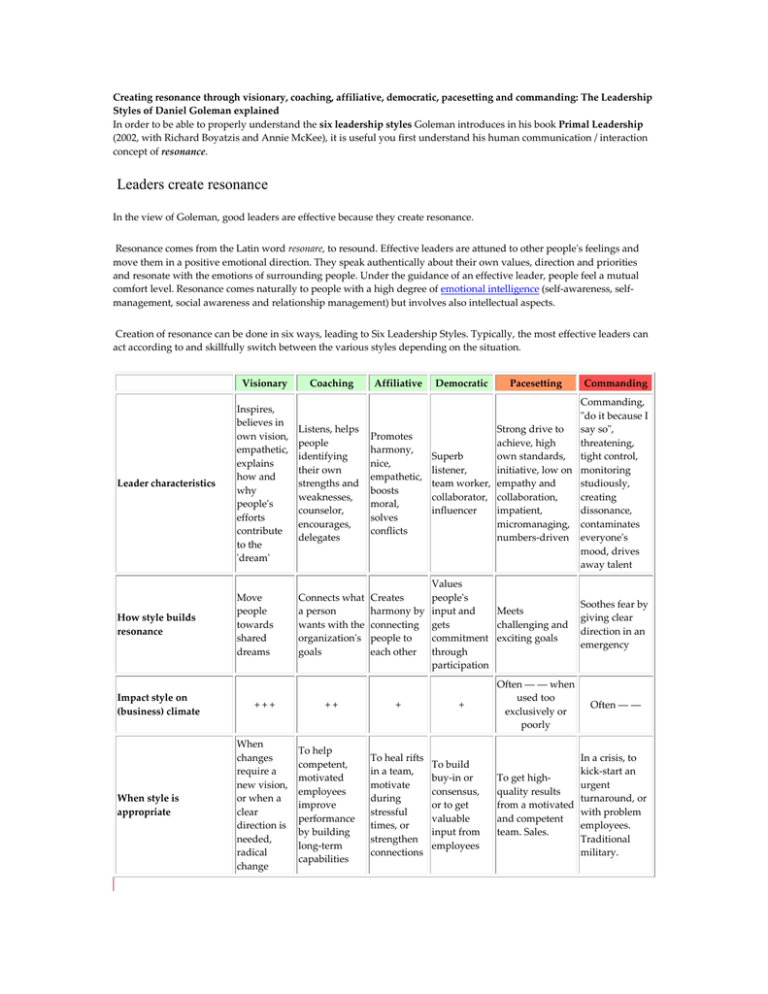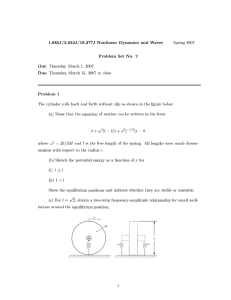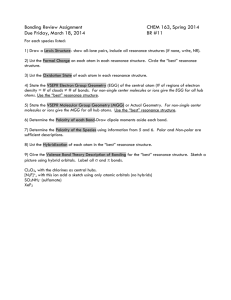Document 14581154
advertisement

Creating resonance through visionary, coaching, affiliative, democratic, pacesetting and commanding: The Leadership Styles of Daniel Goleman explained In order to be able to properly understand the six leadership styles Goleman introduces in his book Primal Leadership (2002, with Richard Boyatzis and Annie McKee), it is useful you first understand his human communication / interaction concept of resonance. Leaders create resonance In the view of Goleman, good leaders are effective because they create resonance. Resonance comes from the Latin word resonare, to resound. Effective leaders are attuned to other people's feelings and move them in a positive emotional direction. They speak authentically about their own values, direction and priorities and resonate with the emotions of surrounding people. Under the guidance of an effective leader, people feel a mutual comfort level. Resonance comes naturally to people with a high degree of emotional intelligence (self-awareness, selfmanagement, social awareness and relationship management) but involves also intellectual aspects. Creation of resonance can be done in six ways, leading to Six Leadership Styles. Typically, the most effective leaders can act according to and skillfully switch between the various styles depending on the situation. Visionary Coaching Affiliative Democratic Pacesetting Commanding Leader characteristics Inspires, believes in own vision, empathetic, explains how and why people's efforts contribute to the 'dream' Listens, helps people identifying their own strengths and weaknesses, counselor, encourages, delegates Commanding, "do it because I Strong drive to say so", Promotes achieve, high threatening, harmony, Superb own standards, tight control, nice, listener, initiative, low on monitoring empathetic, team worker, empathy and studiously, boosts collaborator, collaboration, creating moral, influencer impatient, dissonance, solves micromanaging, contaminates conflicts numbers-driven everyone's mood, drives away talent How style builds resonance Move people towards shared dreams Connects what a person wants with the organization's goals Creates harmony by connecting people to each other Impact style on (business) climate When style is appropriate +++ When changes require a new vision, or when a clear direction is needed, radical change ++ To help competent, motivated employees improve performance by building long-term capabilities + To heal rifts in a team, motivate during stressful times, or strengthen connections Values people's input and Meets gets challenging and commitment exciting goals through participation + To build buy-in or consensus, or to get valuable input from employees Often ― ― when used too exclusively or poorly Soothes fear by giving clear direction in an emergency Often ― ― In a crisis, to kick-start an To get highurgent quality results turnaround, or from a motivated with problem and competent employees. team. Sales. Traditional military.






